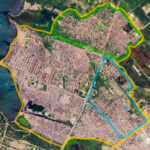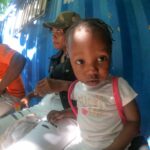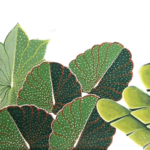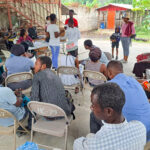Tomorrow, we mark the tenth anniversary of one of the most horrific natural disasters on the planet in the past 100 years. A magnitude 7.0 earthquake, or trembleman té, struck just outside the Haitian capital of Port-au-Prince shortly before 5pm on January 12, 2010. In its wake, the earthquake led to the loss of over 100,000 lives, left about one and a half million people homeless and countless lives shattered.
I was present soon after that earthquake hit, working closely with our Lamp for Haiti health center staff in the huge shantytown known as Cite Soleil, as well as with partner organizations like St Damien’s Hospital and CMMB (Christian Medical Mission Board). I saw massive destruction throughout the city, and heard the cries of wounded and dying. I heard, too, the similarly pitched wails of those scarred by the tragic loss of someone they dearly loved. I smelled death that week, literally; even today the memory of that smell returns unexpectedly from time to time.
So why remind ourselves of such a terrible day?
Some say that recalling the earthquake is too painful, and we ought not conjure that day again. It’s too much to bear. Others have suggested to me that pain is an inevitable part of being human, and even a major disaster is not completely unexpected. As such it is yet one more valley, albeit a deep one, in the roller-coaster that is life. We just need to keep moving forward.
I would side with those who posit a third perspective. It is a perspective which looks at the catastrophe as a starting point, almost a chance to reset.
It’s no surprise to anyone who follows Lamp’s work or who follows events in Haiti that both human-incited and natural disasters have made daily life in Haiti a challenge. But that challenge has not gone unanswered by most Haitians, and we at Lamp, have walked in solidarity along with them in formulating a concrete response to extreme adversity.
When we started Lamp back in 2005, we had one doctor and one manager, working two half-days per week. We hadn’t the resources to support anything more. We had to start somewhere, and with trepidation we began to walk on wobbly legs, confident that the mission of Lamp for Haiti would steady our gait. I recall when we had resolved our first “labor concerns” – staff were uncomfortable taking public transportation into Cite Soleil, as they felt they were targets for thieves; they were right, and we soon purchased our first vehicle — it coincided with the end of a remarkable first year. We knew at the time that once the question shifted from “Do we dare even consider trying such a project?“ to “That we are doing this is a given, now how do we navigate the next obstacle?” it would mark a turning point. Once the project’s existence was seen as more than an experiment, but became part of the fabric of a community, then we were confident we could build local support.
In the wake of the earthquake ten years ago, Lamp staff came together, supported by generous donors, to expand our work and our footprint in Cite Soleil. Initially we hired trucks to dispense water , for example. Next we repaired a local water station in concert with the Haitian Kwa-Wouj (Red Cross). Today we help to manage three water stations, partnering with a local community leader and DINEPA, the water utility.
We have continued to walk with the mission in our collective mind’s eye. Our programming has grown substantially. We now have 21 (!) staffers in Haiti, including one part-time and three full-time doctors, expanding the breadth of our primary care impact. We recently were asked by the Ministry of Health (MSPP) to become an official vaccine provider in Cite Soleil. (MSPP does not make such requests unless the organization is very well vetted. )
It is fitting for us to remember, then, on this day, not only as a way to honor the fallen, but as impetus for us to recalibrate, and reinvigorate and recommit.
Thanks for being a part of this day, of this work, and of the movement that is Lamp for Haiti.
– Dr. James Morgan, Jan. 11, 2020










